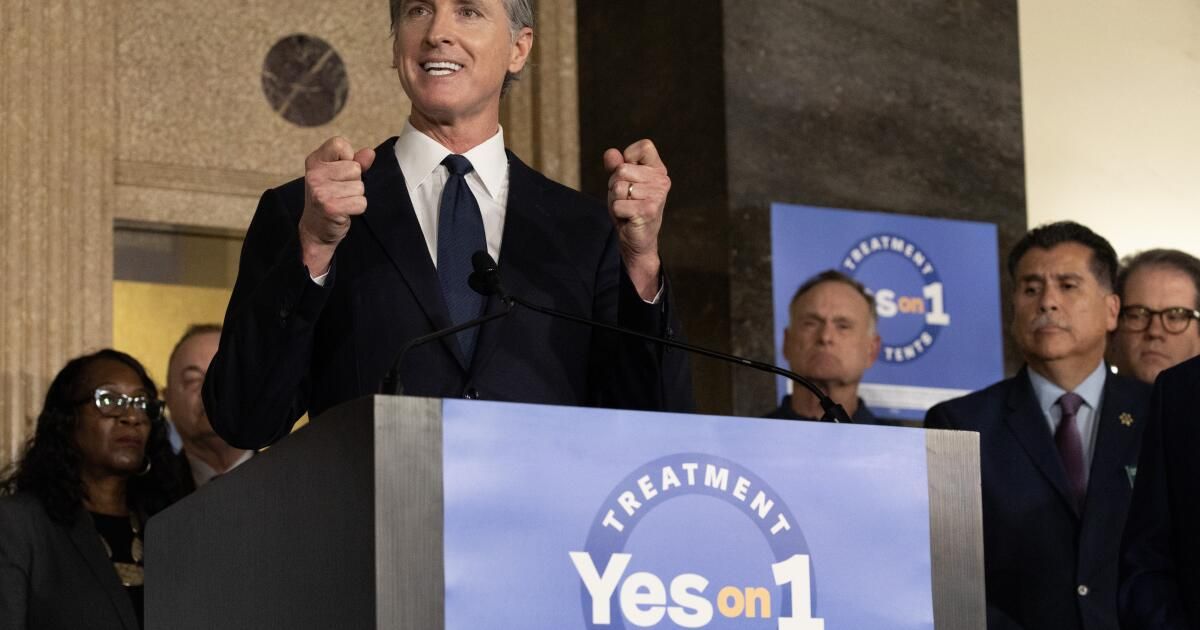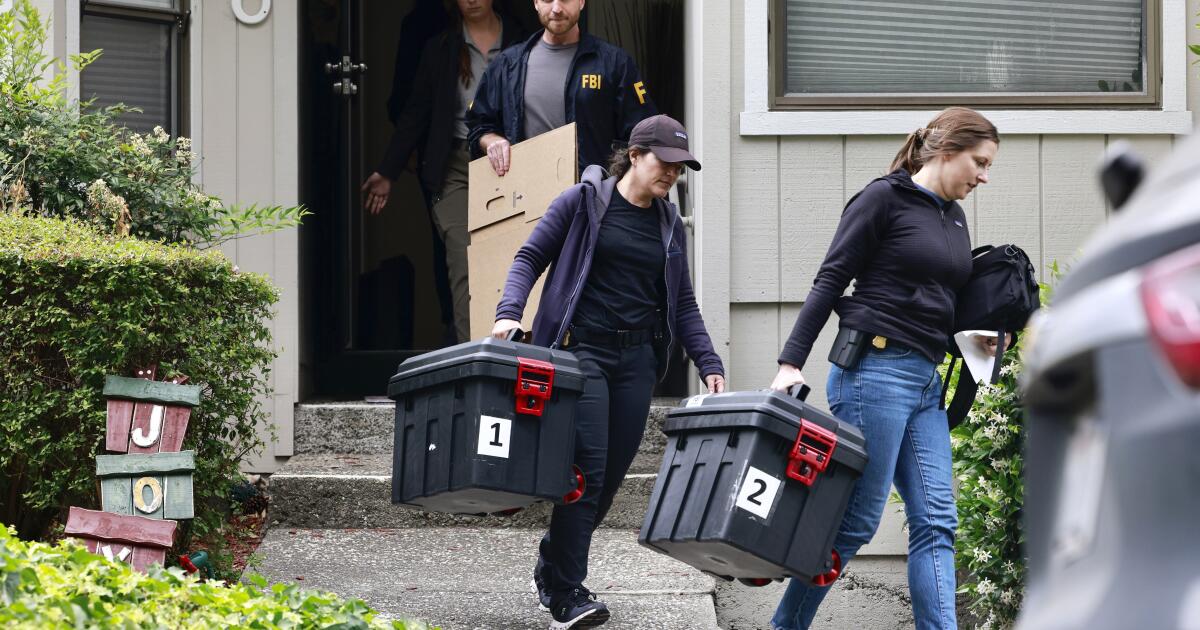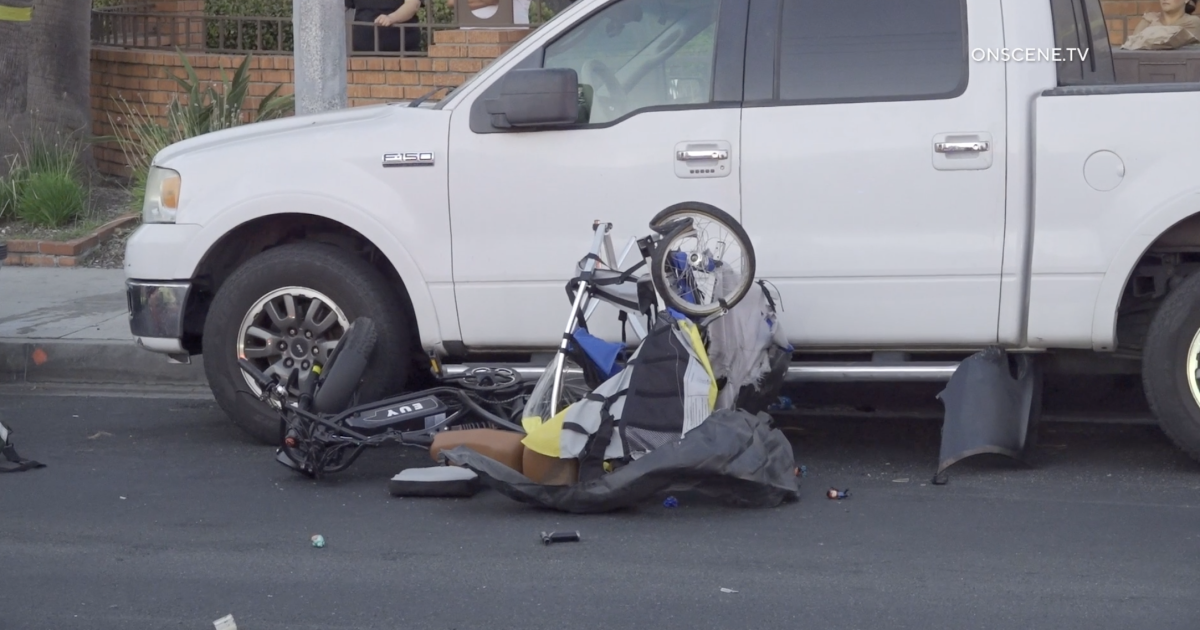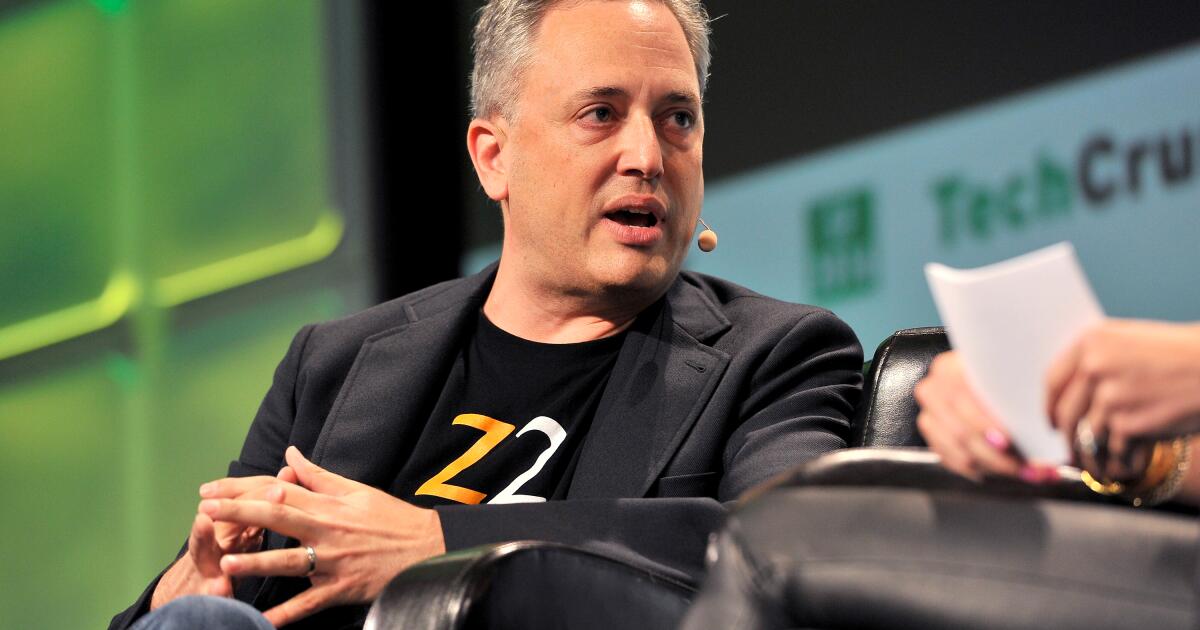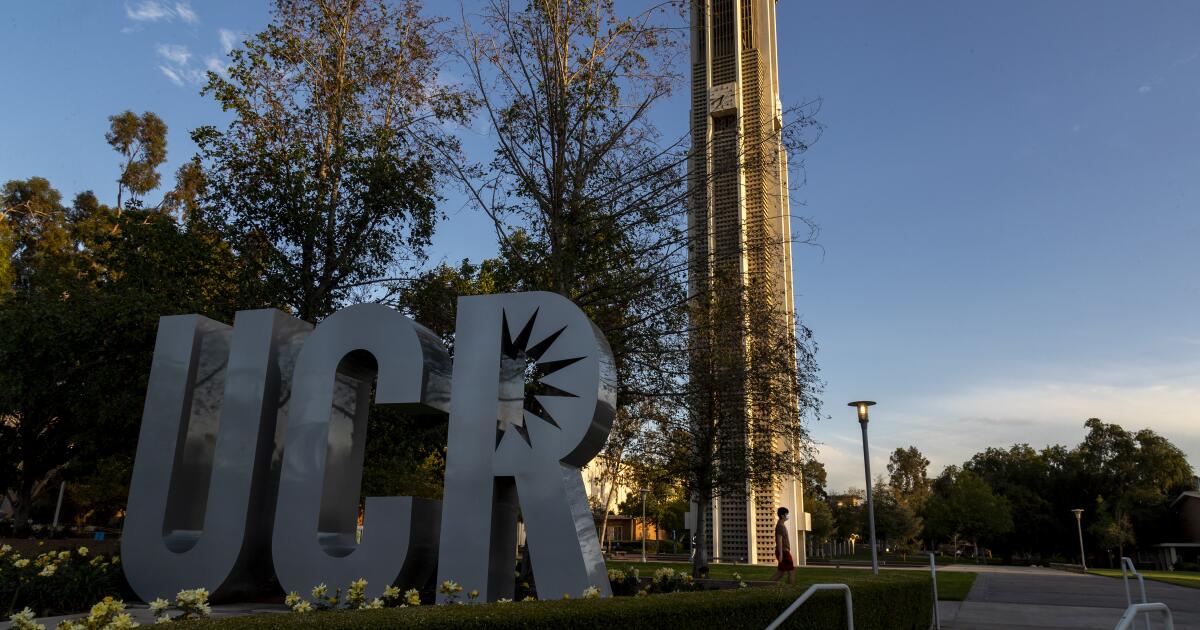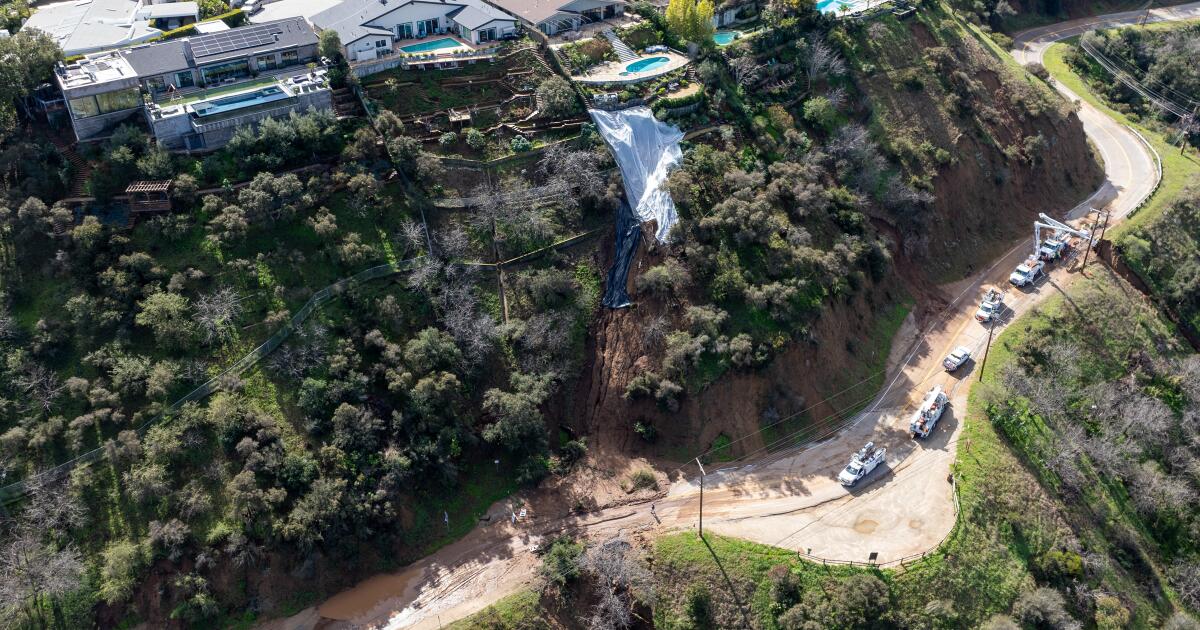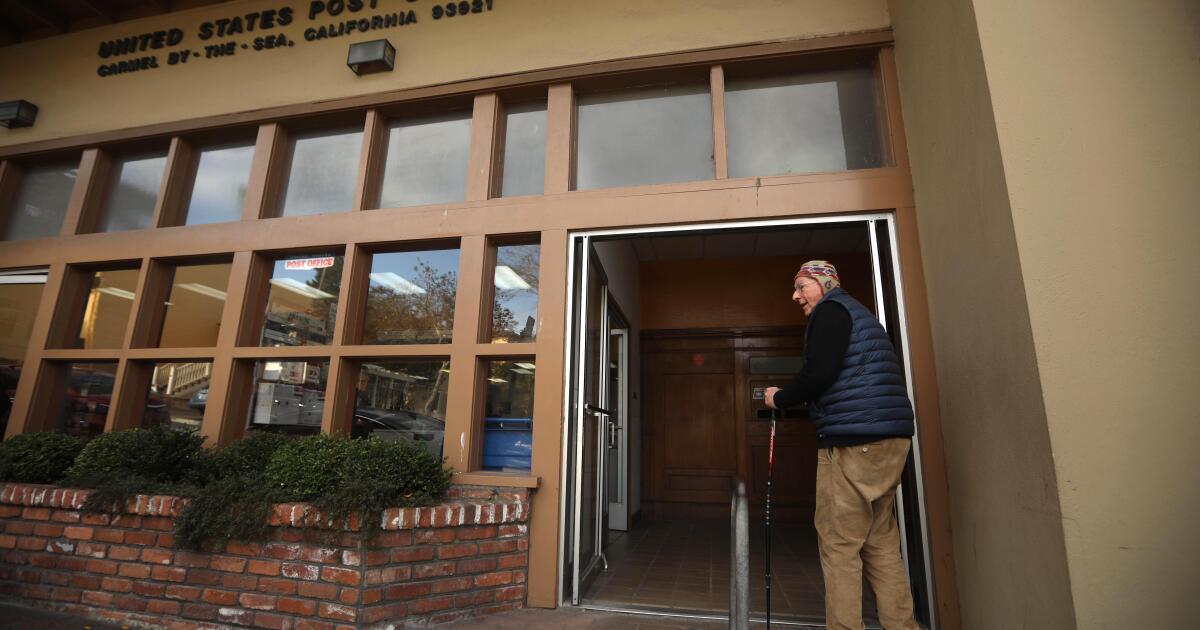Gov. Gavin Newsom should have learned this four years ago: You're not trying to sell voters on increased government spending in a primary election.
Particularly Sacramento spending.
Newsom's Proposition 1, a proposal to pump more money into treating homeless people who are mentally ill, addicted to drugs or alcoholics, may finally pass once vote counting is complete. But at the time of writing, it's still too close, with the votes for and against virtually even.
Newsom must be surprised.
In January, the cocky governor told Times reporter Taryn Luna in an interview: “I think he's going to win overwhelmingly. Period. Final point”.
Typical Newsom arrogance.
Many politicians were surprised last year when he insisted that his proposal be included in the March 5 presidential primary election. Primary elections are often graveyards for liberal causes.
This is because they typically suffer from low voter turnout. And that helps conservative agendas. When turnout is low, the electorate is made up of a larger than usual proportion of right-wing voters, including older whites and Republicans.
In this election, the final turnout will probably be a pathetic 33% of registered voters, says Paul Mitchell, who runs Political Data Inc.
So far in the vote count, 38% of Republicans have returned their mail-in ballots, compared to just 31% of Democrats, Mitchell says. Additionally, 51% of voters over 65 have returned their votes, compared to just 13% of those under 35.
Whites represent 67% of those who vote, although they are only 55% of registered voters. In contrast, Latino voters represent only 17% of the votes cast, although they represent 28% of those registered.
“When youth participation falls, Latino participation falls with it. Latinos are younger,” says Mitchell.
Four years ago, in the presidential primaries on March 3, turnout was a little higher: 47%. But he was not pro-Democratic enough to rescue a $15 billion school construction bond proposal that was crafted in the Legislature with Newsom's strong input and support. Voters rejected it by six percentage points.
The proposition number (13) may have confused voters. Supporters of the measure theorized that people feared it would weaken the sacrosanct 1978 property tax reduction initiative, Proposition 13. Maybe some did. But the real reason it failed was that turnout was low and voters opposed the spending.
That measure should have been included in the November general election, when turnout was 76%.
In 2008, in an even earlier presidential primary on February 5, voters rejected a measure to spend more money on community colleges.
You'd think Newsom would have understood the lesson.
“If you're going to ask voters for money, always go to the general election,” says Democratic consultant David Townsend, who has led many local tax and bond measures.
“There are more liberal voters and they are younger. They have a broader vision of life. They want things to be better for them. The primaries have a lot of old people like you and me.”
Across California on March 5, about the same number of local school bond measures failed (14) as passed (15), according to the California Taxpayers Association. Some measures are still too close to be announced.
Newsom's Proposition 1 included a $6.4 billion bond. But the cost would double when interest on the loan is added. Not all voters are stupid. Many do the math and disapprove of the many billions California has already spent trying to reduce homelessness.
Proposition 1 money would finance the construction of 4,350 housing units. There would be new treatment facilities for 6,800 homeless people. Newsom touted housing numbers upward.
Perhaps if the governor had focused more on selling his confusing ballot measure and less on promoting his national political profile, Proposition 1 would have fared better. But mainly, the proposal fared worse than expected because it was placed on the wrong ballot, even though Newsom raised more than $20 million for the campaign and opponents spent virtually nothing.
Good day for moderate Democrats
Rep. Adam Schiff (D-Burbank) celebrates with his wife during an election night party in Los Angeles as he seeks to replace Sen. Dianne Feinstein in the U.S. Senate.
(Wally Skalij / Los Angeles Times)
It was a bad day for several Sacramento politicians, especially liberals. It appears that at least 10 lawmakers seeking another position failed.
Several moderate legislative candidates did well. But the next Legislature elected in November will continue to be dominated by the liberals.
“Overall, it was a pretty good night for the moderate side,” says Marty Wilson, chief political strategist for the state Chamber of Commerce. “It was a solid performance by business-backed Democrats.”
In the U.S. Senate race, the most moderate candidate, Democratic Rep. Adam B. Schiff of Burbank, easily defeated two more liberal Democrats, Rep. Katie Porter of Irvine and Barbara Lee of Oakland.
But I suspect Schiff's victory was largely due to the strong name recognition gained from being the House's leading anti-Trump crusader.
Similarly, Republican Steve Garvey finished in the top two (qualifying for the November election) due to the fame gained from being a former star player for the Los Angeles Dodgers and San Diego Padres.
Schiff's cynical television ads promoting Garvey to Republican voters to ensure that Porter would not become his November challenger probably weren't necessary at all. He could have come out with a cleaner image.
Porter ran a poor campaign, emphasizing issues that did not resonate with a low-turnout electorate and criticizing the corporate corruption of politics. Unmoved voters probably asked: Yes, what else is new?
Lee was the most impressive candidate for me. He behaved well and stuck to his principles, although they were too liberal, even for California. No one will be elected senator if they defend a national minimum wage of $50.
All that said, there must be a way to count votes faster, including carefully making sure they are legitimate.

